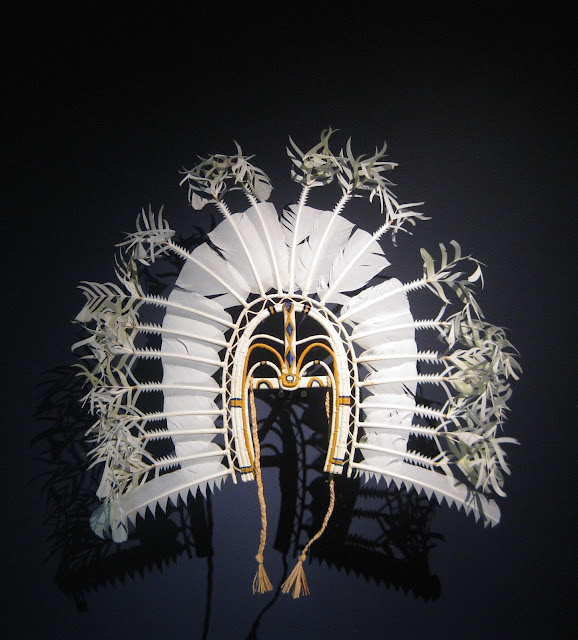Shane and I spent most
of the Easter break in Canberra. The primary focus of our stay was an exhibition
of 130 works by renowned Australian painter Tom Roberts, mounted by the
National Gallery of Australia. One of this country’s finest artists, Roberts (1856-1931) was a member of the legendary group of Australian Impressionists known as
the Heidelberg School.
The show opened in early December and attracted record-breaking visitor numbers throughout its run. It ended on Easter Monday, but numerous works can still be viewed on the NGA website. To access the works, which are divided into key periods, go HERE and click on Gallery.
Pictured below is one of Roberts's most iconic works, Shearing the Rams, 1890, oil on canvas on composition board, 122.4 x 183.3 cm. Collection: National Gallery of Victoria:
The NGA’s extensive permanent collection was an added bonus. The following is a random, eclectic selection - a mere smidgen of the gallery's myriad treasures.
A work that never fails to enchant is Heri Dono’s Flying angels, 2006, polyester resin, clock parts, electronic components, paint, wood, cotton gauze:
Details of Flying Angels:
Catching an angel's shadow (photograph by Shane Jones):
Walking David Hockney’s A Bigger Grand Canyon, 1998, oil on 60 canvases (20.7 m 7.44 m overall). Photo by Shane Jones:
Below: plunging into Hockney’s A Diver, 1978 (AKA A Diver, Paper Pool 17) paper pulp (12 panels) Sheets: 91.4 x 71.1 cm; Overall: 182.8 x 434.3 cm. Photo credit: Shane Jones.
We were delighted to see so many of Hockney’s works on display. Below, Shane views An image of Gregory, 1984-86 and Caribbean tea time, 1987. To his left is Roy Lichtenstein’s Nude with blue hair from the Nudes series, 1994:
Three works by David Hockney. Left: An image of Gregory, 1984-86, from the Moving focus series, lithograph, screenprint, collage, hand painted frame. Right: Caribbean tea time, 1987, folding screen from the Moving focus series 1984-87, lithograph, screen print, stencil, collage, paint, plastic and wood. Right: An image of Celia, 1984-86, from the Moving focus series, lithograph, screenprint, collage, hand painted frame:
An artist I’ve long admired is Annette Messager. This is Mes voeux (My vows) 1989, gelatin silver photographs, coloured pencil on paper, string. The images of body fragments reference ex-votive offerings:
Another commanding lense-based work is Christian Boltanski’s haunting Pourim reserve, 1989, gelatin silver photographs, tin biscuit boxes, wall lights:
Like Heri Dono, Tina Modotti recognises the power of puppetry as a conveyer of social and political narratives. Pictured below is her Hands of marionette player, Mexico, 1926, gelatin silver photograph:
Unknown artist: Comb (Kerem Seker) c. 19th century, from the Torres Strait Islands, Queensland:
Yessie Mosby, Kulkalgal Ya people: Dhoeri (Initiate) Masig (Yorke Island) Torres Strait Islands, Queensland. (2010, bamboo cane, twine, natural earth pigment, goose, cockatoo and cassowary feathers):
Yessie Mosby, Kulkalgal Ya people: Dhoeri (Priest) Masig (Yorke Island) Torres Strait Islands, Queensland. (2010, bamboo cane, twine, natural earth pigment, goose, cockatoo and cassowary feathers):
The NGA’s Pacific art collection mainly comes from Melanesia (New Guinea, Vanuatu New Caledonia and the Solomon Islands). The objects in the space below are of deep cultural significance. Many contain ancestors and bush spirits and once provided a magical connection between the living and the dead.
Viewed from above, Shane studies the intricately carved Ancestor pole (bisj) c. 1960s, wood, ochres and bast, originating from the Omandesep, Asmat people of Papua, Indonesia (foreground right):
















